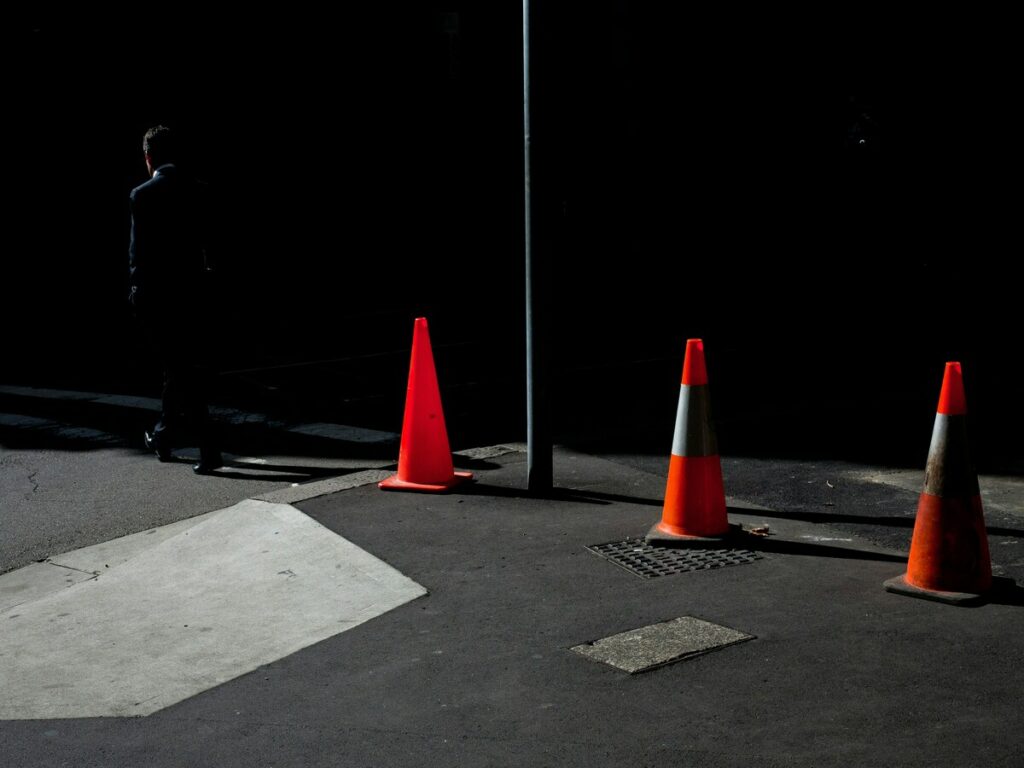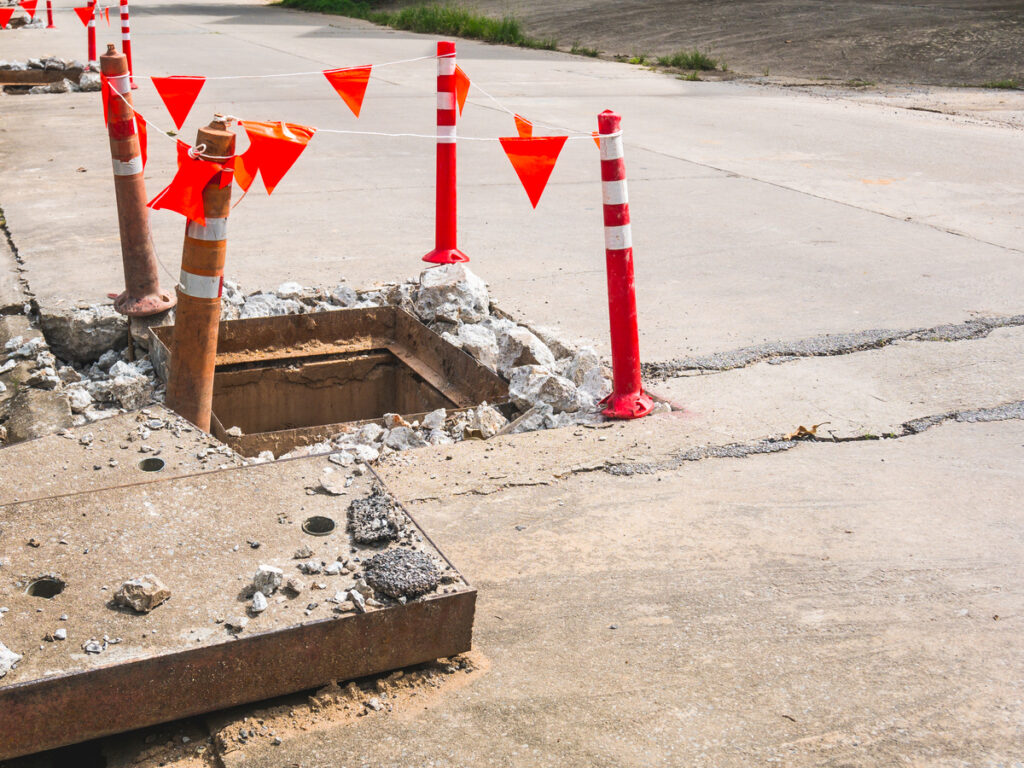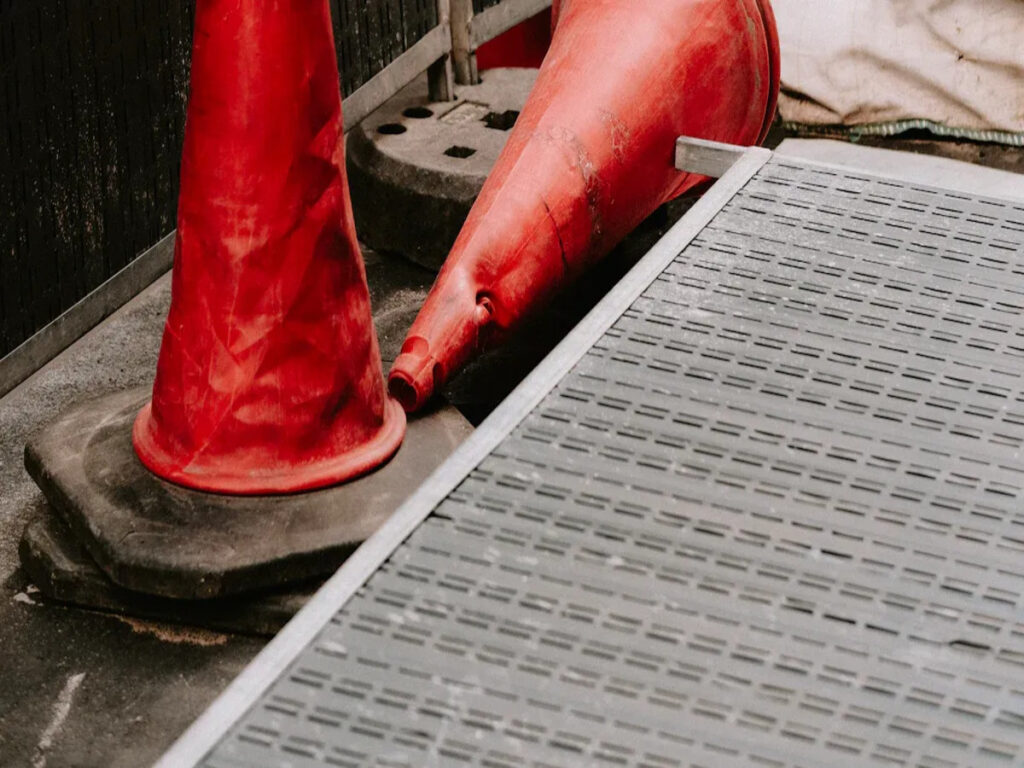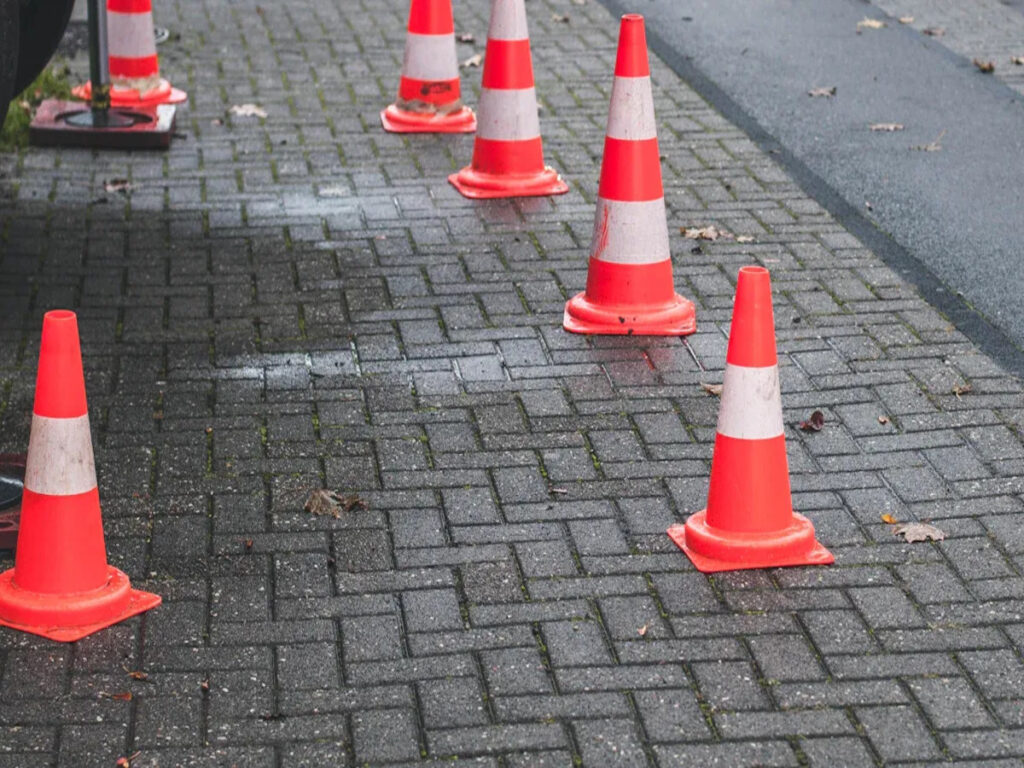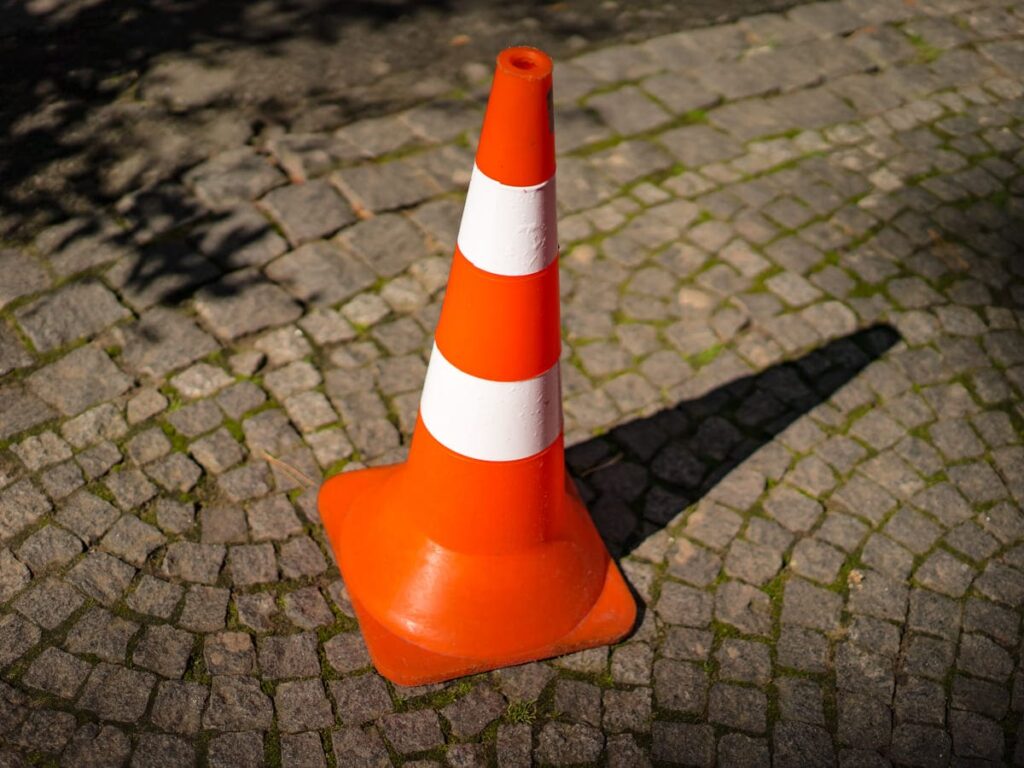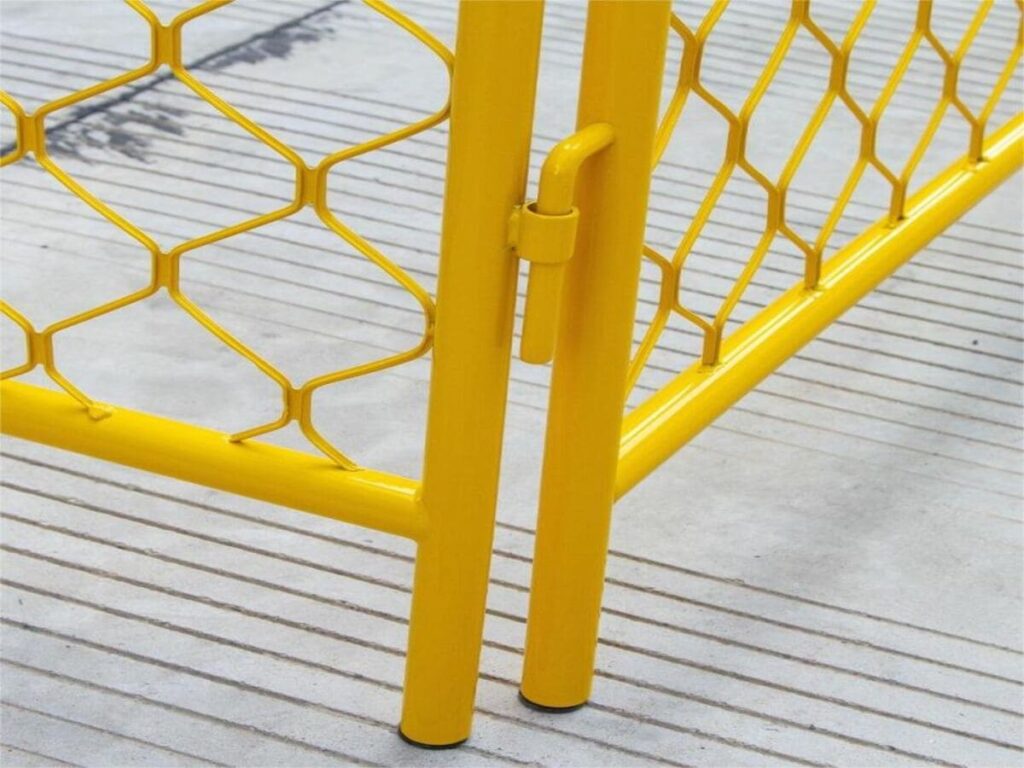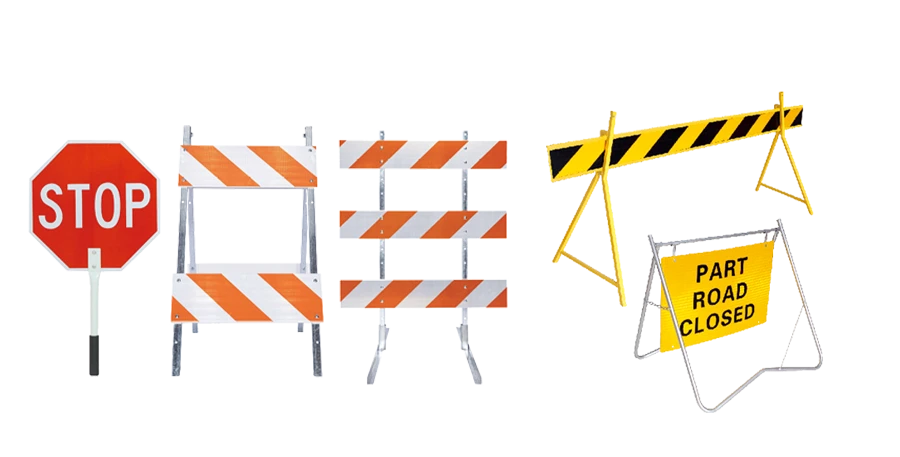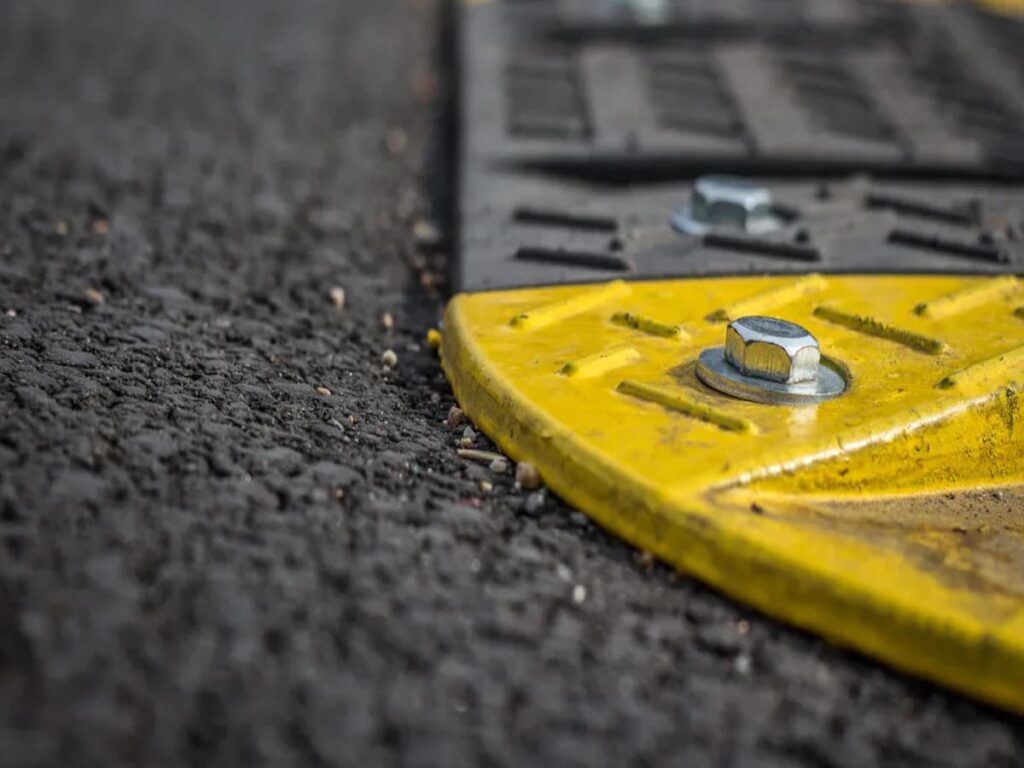
Cities have more traffic accidents now. Making streets safer is very important. Traffic calming devices like speed humps, speed cushions, raised crosswalks, radar signs, and roundabouts help slow cars down. These devices keep people safe. They work well in cities and near schools. They are also good for the environment on busy streets. Many strategies use design features like narrow lanes and landscaping. The table below shows how these devices lower crashes and injuries:
| 측정하다 | 영향 |
|---|---|
| Reduction in serious and deadly crashes | Cut in half |
| Decrease in serious accidents with child pedestrians | 75% 떨어지다 |
| Reduction in cyclist accidents | 50% 떨어지다 |
| Overall crash reduction | 40% 떨어지다 |
| Speed reduction from speed tables | Average speeds cut by 15% |
| Reduction in pedestrian crashes from raised crosswalks | 45% 떨어지다 |
주요 테이크 아웃
- Traffic calming devices like speed humps and raised crosswalks help lower accidents and injuries. These devices are very helpful for people walking and for kids.
- Picking the best traffic calming device depends on what the area needs. You should think about the kind of street and how many cars use it.
- It is important to keep traffic calming devices in good shape. This helps them work well and stay safe for everyone using the road.
- Putting up clear signs to warn drivers about traffic calming devices makes things safer. Signs help drivers slow down and pay more attention.
- When the community helps plan traffic calming measures, people accept them more. This also makes these safety ideas work better.
Types of Traffic Calming Devices
Overview of Traffic Calming Devices
Cities use many tools to make streets safer. These devices help slow down cars. They protect people who walk or ride bikes. Urban planners pick different devices for each area. 다음은 몇 가지 일반적인 유형입니다:
- 교통 전환: Devices like traffic circles and chicanes make drivers slow down. Winding street designs also make cars change direction.
- Rubber Speed Bumps: These bumps are made from recycled rubber. They are easy to see at night. They work well in parking lots and construction zones.
- 고무 속도 혹: These are good for places with low speed limits. You can find them on residential streets, 공원, 그리고 학교 근처.
- 고무 속도 쿠션: These help heavy vehicles and can be changed to fit the road. Emergency vehicles can pass over them easily. They are great for busy city streets.
Planners often use more than one device together. This helps make streets safer. They want to lower accidents and keep traffic moving.
Device Selection Criteria
Picking the right traffic calming devices is important. Planners want devices that last a long time. They also want them to work well in many places. Here are some things they look at:
- Installing devices the right way keeps everyone safe.
- Good materials help devices last longer. They can handle lots of cars and trucks.
- Checking and fixing devices often keeps them working well.
Checking speed humps often is very important. This helps make sure they work and keep people safe.
Cities need traffic calming devices that fit their own needs. Planners think about the kind of street and how many cars use it. They also think about who uses the road. They look at how each device affects emergency vehicles and buses. Smart planning helps cities make streets safer for everyone.
Speed Calming Speed Humps
Traffic Speed Humps Overview
과속방지턱 help slow down cars on busy streets. Some people mix up speed humps and speed bumps, but they are not the same. Speed humps are round and go across the whole road. Drivers feel a small bump when they drive over them. Many speed humps are put in a row to keep cars slow. The size of each hump changes how much cars slow down. Most speed humps are made from asphalt, 콘크리트, 또는 고무. Asphalt costs more and takes longer to put in. Concrete lasts a long time but can break. Rubber speed humps are easy to put in and move.
| 재료 | 설명 |
|---|---|
| 아스팔트 | 많이 사용됨, but costs more and takes longer to install. |
| 콘크리트 | Lasts long but can break and is hard to change. |
| 고무 | Easy to put in, 오래 지속됩니다, and can be moved or changed easily. |
Safety and Efficiency Benefits
Speed humps make streets safer for everyone. They slow down cars and help stop accidents. Studies show speed humps lower crashes with people walking by 22%. For kids, crashes drop even more, ~에 의해 44%. Speed humps also lower accidents on local roads by 26%. When cities put speed humps near schools, fewer kids get hurt. Speed bumps and speed humps work together to keep traffic calm and protect people walking or biking.
| 증거 설명 | Reduction in PMVC | Age Group |
|---|---|---|
| Fewer crashes after speed humps are put in | 22% | All ages |
| Fewer crashes with kids | 44% | 어린이들 (0-15) |
| Fewer crashes on local roads | 26% | All ages |
Drawbacks and Limitations
Speed humps have some problems too. Emergency vehicles take longer because each hump adds about three seconds. Some people do not want to buy homes near speed humps, so house prices can go down. Cars make more noise when they go over speed humps. Engines get louder and make more pollution as cars slow down and speed up. Speed humps can hurt cars, wearing out tires and brakes. Traffic may move to other streets, making those places busier. Taking out speed humps costs a lot and is hard for cities.
| Concern Type | 증거 |
|---|---|
| Emergency Response Times | Police and emergency vehicles are slowed by about three seconds for each hump. |
| Property Values | Speed humps can lower house prices because some buyers do not want homes near them. |
| Noise Levels | Speed humps make more noise from cars and engines. |
| Environmental Pollution | Speed humps cause more pollution as cars slow and speed up. |
| Vehicle Damage | Speed humps can hurt cars, wearing out tires, brakes, and suspension. |
| 교통 전환 | Speed humps move traffic to other streets, making those places busier. |
| Removal Costs | Speed humps cost a lot to take out, which is hard for cities. |
Best Urban Use Cases
Speed humps work best in places where people walk and bike a lot. School zones get big help because speed humps lower crashes with kids. Neighborhood streets use speed humps to keep cars slow and safe. Collector roads use speed humps, but they may not work well in winter. Speed bumps and speed humps help cities make safer places for families and kids.
| 위치 유형 | Effectiveness on PMVC | Specific Findings |
|---|---|---|
| 학교 구역 | 높은 | Big drop in crashes for kids |
| 주거 지역 | 높은 | Used a lot for slowing traffic |
| Collector Roads | 보통의 | More crashes on these roads in winter |
Complementary Speed Hump Road Sign for Humps
Cities put up 도로 안전 징후 to warn drivers about speed humps ahead. These signs help drivers slow down before the hump. Signs show a picture of a speed hump or say “Speed Hump Ahead.” When cities use speed bumps and speed humps together, signs help keep people safe. Drivers pay more attention and drive slower. Good signs help everyone stay safe and keep traffic moving well.
팁: Clear road signs near speed humps help drivers slow down and watch for people crossing.
Traffic Calming Speed Cushions
Speed Cushions Overview
속도 쿠션 are wide raised platforms on the road. They are not the same as speed humps or speed bumps. Designers put wheel cutouts in speed cushions. Big vehicles like fire trucks and ambulances can drive through these cutouts. They do not have to slow down. Smaller cars and trucks must slow down to cross the raised part. Speed cushions help keep traffic calm. Emergency vehicles can move fast when needed. People see speed cushions on busy city streets. They are common where buses and emergency vehicles need to pass.
- Speed cushions have wheel cutouts for big vehicles.
- Speed humps and speed bumps slow down all vehicles.
- Speed cushions slow down regular cars but let emergency vehicles keep their speed.
Safety and Efficiency Benefits
Speed cushions help stop speeding and make streets safer. Many studies show speed cushions lower traffic speeds and accidents. Researchers studied speed cushions in different cities. They found speed cushions help drivers pay attention and slow down near schools and parks. Here are some studies that show how speed cushions improve safety:
| 공부 제목 | Authors | 년도 | 결과 |
|---|---|---|---|
| Developing Design Standards for Speed Cushions | Chang, 케이. et al | 2007 | Evaluates speed cushion design effectiveness. |
| Collector Street Traffic Calming: A Comprehensive Before – After Study | Buckholz, 케이. et al | 2000 | Analyzes speed changes post-installation. |
| An Evaluation of Traffic Calming Measures and Their Impact on Vehicular Speeds | Dulaski, 디. | 2006 | Assesses speed reduction on urban arterial roadways. |
| Traffic Calming – An Assessment of Selected On-Road Chicane Schemes | Transport Research Laboratory | 1998 | Reviews effectiveness of chicane schemes on speed. |
| Investigating the Effectiveness of Traffic Calming Strategies | Minnesota Local Road Research Board | 2001 | Studies driver behavior and speed changes. |
| Temporary Speed Hump Impact Evaluation | 순도 검증 각인, S. et al | 2002 | Evaluates temporary speed humps on speed reduction. |
| Kodak Park Neighborhood Traffic Management | Huffine, 기음. | 2005 | Examines neighborhood traffic management strategies. |
Drawbacks and Limitations
Speed cushions do not work well everywhere. Some drivers try to go around them. This can be dangerous. Speed cushions may not slow down motorcycles or very wide vehicles. People sometimes complain about loud noise from cars going over speed cushions. Speed cushions need regular checks to make sure they stay in place. If not installed right, they can confuse drivers and make traffic worse.
Best Urban Use Cases
Speed cushions work best on neighborhood streets and bus routes. They slow down regular cars but let emergency vehicles go fast. In King County, 의, the fire department said speed cushions did not slow them down as much as speed humps or speed bumps. Urban planners like speed cushions for busy places where safety is important.
- Neighborhood streets
- Bus routes
- Busy urban roads with emergency vehicle access
Complementary Traffic Calming Signs for Speed Cushions
Cities use clear signs to warn drivers about speed cushions ahead. These signs help drivers slow down and watch for people crossing. Good signs show a picture of a speed cushion or say “Speed Cushion Ahead.” Signs make speed cushions work better and keep traffic safe.
팁: Signs before speed cushions help drivers get ready to slow down and keep everyone safe.
Raised Crosswalks
Raised Crosswalks Overview
Crosswalks that are elevated resemble standard crosswalks. They work like wide, flat speed bumps across the street. Drivers must slow down when they drive over them. These crosswalks help people cross busy roads safely. You often see raised crosswalks near schools and parks. They are also in places with lots of people walking. Raised crosswalks use special paving and bright paint. 이것은 운전자가 멀리서 그들을 볼 수 있도록 도와줍니다.
| 디자인 기능 | Contribution to Safety |
|---|---|
| Level with sidewalk | Easy to walk on and less chance to trip. |
| Width of crossing | Wide so everyone can see and use it. |
| Length of crosswalk | Long enough for cars to slow down and stay on top. |
| Special paving treatments | Makes the crosswalk stand out for drivers. |
| Detectable warnings | Helps people with vision problems find the crossing. |
| Smooth vertical transition | Comfortable for cars and helps drivers follow speed limits. |
Safety and Efficiency Benefits
Raised crosswalks slow down cars and make streets safer. They help drivers stop for people crossing. These crosswalks make it easier for drivers to see walkers. Raised crosswalks help people in wheelchairs or with strollers cross the street. Studies show raised crosswalks lower car speeds and injuries. In Durham, NC, and Montgomery County, MD, streets with raised crosswalks had slower traffic. When cities add flashing lights, drivers stop more for people crossing. Raised crosswalks work better than speed bumps or humps alone. They keep walkers safe and slow down cars.
- Make cars go slower
- Help drivers see people walking
- Help drivers stop, especially when turning
- Make it easier for people with wheelchairs or strollers
- Tell drivers the area is good for walking
- Connect busy places with lots of people
Drawbacks and Limitations
Raised crosswalks have some problems. Snowplows can scrape off the paint in winter. Cities need to fix the paint and surface often. Big vehicles, like farm trucks, may have trouble crossing. Raised crosswalks make snow removal harder for workers. Some towns do not protect the paint, so repairs cost more. Putting paint lower in the crosswalk helps, but it costs a lot. Raised crosswalks may not work well on roads with lots of big trucks.
메모: Raised crosswalks need regular care, especially in places with snow or lots of big vehicles.
Best Urban Use Cases
Raised crosswalks work best where many people walk. Cities put them near schools, 공원, and shopping areas. They help in neighborhoods with lots of kids. Raised crosswalks fit well on streets with slow or medium traffic. They do not work well on highways or roads with lots of trucks. Planners like raised crosswalks for busy crossings and places where people need to cross safely.
- 학교 구역
- 공원과 놀이터
- Shopping centers
- Neighborhood streets with lots of walkers
Complementary Traffic Calmed Area Signs for Raised Crosswalks
Cities use signs to tell drivers about raised crosswalks ahead. These signs warn drivers to slow down and watch for people crossing. Signs show a picture of a person walking or say “Raised Crosswalk Ahead.” Good signs help raised crosswalks work better, just like signs for speed bumps or humps. Drivers pay more attention and slow down. 이를 통해 이 지역은 모두에게 더 안전해집니다..
팁: Clear signs before raised crosswalks remind drivers to slow down and look for people crossing, especially in busy traffic.
Radar Signs
Radar Signs Overview
광교통 Radar signs show drivers how fast they are going. These signs use radar to check each car’s speed. Drivers see their speed on the sign and often slow down. Radar signs work well where people drive too fast. You can find radar signs near schools and busy streets. They do not slow cars down like speed bumps. 대신에, radar signs help drivers change how they drive by showing real-time speed.
- Radar signs show drivers their real speed.
- Radar sensors check how fast cars go.
- Signs flash or change color if drivers are speeding.
Safety and Efficiency Benefits
Radar signs help make streets safer for everyone. Drivers see their speed and slow down right away. In Bellevue, most drivers slowed down by 10 mph after seeing radar signs. In Alpharetta, GA, average speed dropped by 5 MPH. Fewer drivers went over the speed limit. School zones saw a 17.5% drop in speed, which helps keep kids safe. Neighborhoods had almost 70% lower speeds, making them safer for families. Radar signs help more people follow speed limits. Many drivers feel responsible when they see their speed. In Tigard, 오레곤, 66% of drivers slowed down after passing radar signs.
Drawbacks and Limitations
Radar signs have some problems. They cost more than speed bumps. Cities need to check and fix them often. Weather can make radar signs work less well. Some people worry about privacy because radar signs collect speed data. If cities do not take care of radar signs, they may stop working or show wrong speeds.
- Cost more to install and fix
- Need to be checked often
- Weather can make them less accurate
- Privacy worries about speed data
Best Urban Use Cases
Radar signs work best where speeding is a big problem. School zones and busy streets need radar signs most. These places have lots of people walking or biking. Radar signs help drivers notice their speed and slow down before reaching these areas. In Chandler, 애리조나, radar signs made drivers go up to 4 mph slower near busy intersections. Dynamic Speed Feedback Signs can lower the risk of people getting hurt by 22%.
| 구역 유형 | Why Radar Signs Work Well Here | How Safety Improves |
|---|---|---|
| 학교 구역 | Many kids and lots of walkers | Speeds drop, safer for children |
| 주거 지역 | Families and pets use these streets | Speeds drop, safer neighborhoods |
| Near Crosswalks | Kids cross here often | Fewer accidents in these places |
Traffic Sign Integration with Radar Systems
Cities use radar signs with other traffic calming devices. They put radar signs before speed bumps to warn drivers. Radar signs work well with regular signs like “School Zone.” When radar signs and speed bumps are together, 운전자가 더 주의를 기울인다. This helps keep traffic safe and steady in cities.
팁: Put radar signs before speed bumps so drivers slow down early. 이것은 모든 사람에게 거리를 더 안전하게 만듭니다.
Design-Based Traffic Calming Devices
Street Design Elements
Design-based traffic calming uses changes in street shape to slow cars. Planners pick things like 연석 확장, lane narrowing, and lane removal. Curb extensions make sidewalks stick out into the street. This makes the road look smaller. People can cross the street faster. Drivers turn more slowly at these spots. Lane narrowing gives cars less space. This makes it hard for drivers to go fast. It also leaves room for bigger sidewalks or safe waiting islands. Lane removal takes away extra lanes. The space is used for walking or biking.
- Curb extensions make roads smaller and help people cross.
- Lane narrowing slows cars and keeps traffic organized.
- Lane removal gives more space for walking and biking.
Safety and Efficiency Benefits
Cities change a lot when they use design-based traffic calming. These changes help slow cars and make streets safer. Studies show crashes between cars and walkers drop by 25%. Multiway stop signs also help. They cut pedestrian crashes by 25% at quiet crossings. Chicanes and sinus speed humps both slow cars. Chicanes may not be as safe because drivers change speed less.
When planners use design-based traffic calming, they protect people and make streets easier to use.
Drawbacks and Limitations
Design-based traffic calming can cause problems too. Emergency vehicles like fire trucks and ambulances may get delayed. Buses can break down faster and riders may feel uncomfortable. Some people complain about more noise and air pollution. Cars speed up and slow down more often. Drivers sometimes feel stressed if the road is confusing. Local shops may get fewer customers if traffic drops too much.
| Drawback/Challenge | 설명 |
|---|---|
| Impact on Emergency Vehicles | Fire trucks and ambulances take longer to get places. |
| Damage to Buses | Buses wear out faster and cost more to fix. Riders feel less comfortable. |
| Increased Noise and Pollution | More speeding up and slowing down makes more noise and pollution. |
| Increased Driver Stress | Confusing roads and signs make driving harder. |
| Decreased Traffic Volumes | Fewer cars can hurt local shops and make places harder to reach. |
Best Urban Use Cases
Cities like Amsterdam and Copenhagen use design-based traffic calming to make streets safer. These cities changed busy roads so people walk and bike more. Neighborhoods with families, 학교, and parks get the most help. Streets with lots of shops and restaurants also get better because people feel safer walking.
Complementary Traffic Calming Device Signs in Design-Based Measures
Signs are important for design-based traffic calming. Cities put up signs for new speed limits and pedestrian zones. Signs warn drivers about changes in the road. 명확한 표지판은 운전자가 무엇을 해야 하는지 알 수 있도록 도와줍니다.. Good signs make traffic calming work better. They guide drivers and protect people walking or biking.
팁: 밝게 사용하십시오, easy-to-read signs so drivers can adjust to new street designs and keep everyone safe.
Comparative Summary
Effectiveness Comparison
People want streets to be safe and simple to use. Cities use different traffic calming devices to slow cars and protect people. Some devices work better on certain streets. It depends on who uses the road. The table below shows how three devices compare. It looks at how well they work, how much they cost, and if people like them:
| 장치 유형 | 유효성 | Cost Consideration | Community Acceptance |
|---|---|---|---|
| 과속방지턱 | Change how cars move, lower speeds, 거리를 더 안전하게 만듭니다. | Do not cost much and last long if put in right. | Most people like them, but some do not if cities do not explain why they help. |
| Speed Feedback Signs | Work well everywhere, especially near busy places. | Cost more at first, but help in places with lots of cars. | People need to trust the signs; not everyone likes them right away. |
| Lane Narrowing | Slow down cars and make streets safer, especially with markers. | Cost depends on how cities build them; markers can make it cost more. | People like them more when they see real changes on the street. |
Best Devices for Specific Needs
Cities pick traffic calming devices based on what each street needs. Here are some top choices for different places: Speed humps slow cars near schools and in neighborhoods. Speed cushions let fire trucks and ambulances go fast but slow down other cars. Curb extensions help kids cross the street and help drivers see people walking. Refuge islands let people cross busy roads in two steps, which is safer. Speed feedback signs work best where drivers go too fast.
Selection Considerations
Planners think about many things before picking traffic calming devices. They look at how many cars use the street and who needs to be safe. They also think about how much money the city has. Cities ask people what they want. Good planning means picking devices that fit the street and help everyone. When cities talk to neighbors and explain why changes are needed, people feel better about new traffic rules.
팁: Cities should listen to families, 드라이버, and emergency workers before making changes. This helps everyone feel safe and happy with the new traffic calming devices.
These five traffic calming devices make streets safer for all people. Each device works best in certain places. Planners should pick the right device for each street. Safety experts give top tips in the table below:
| 추천 | 설명 |
|---|---|
| 속도 제한 시행 | Use speed limits and road designs like speed bumps and roundabouts. |
| Prioritize Vulnerable Users | Focus on people walking, 자전거, or using public transport. |
| Safe System Principles | Make safer roads a main goal for every street. |
Cities get the best results when everyone works together. In Memphis, neighbors gave ideas by signing petitions. 캘리포니아에서, people used online tools to learn about speeding and calming plans. These actions help everyone feel included in making streets safer.
FAQ
What is the difference between speed humps and speed cushions?
Speed humps go all the way across the road. They slow down every car and truck. Speed cushions have spaces for wide tires. Fire trucks and ambulances can drive through these gaps fast. Regular cars must slow down for both types.
Do radar signs actually change driver behavior?
Radar signs show drivers how fast they are going right now. Many drivers slow down when they see their speed on the sign. Studies found radar signs can make cars go 5 에게 10 mph slower.
Where should cities install raised crosswalks?
Cities put raised crosswalks near schools, 공원, and busy stores. These places have lots of people walking. Raised crosswalks help drivers see people and slow down.
Are traffic calming devices safe for emergency vehicles?
Most devices make emergency vehicles go slower. Speed cushions let fire trucks and ambulances keep moving fast. Planners pick devices that keep everyone safe.
How often should cities check and maintain traffic calming devices?
Cities need to check devices every few months. Regular checks help keep them safe and working well. Fixing problems quickly stops bigger issues.

